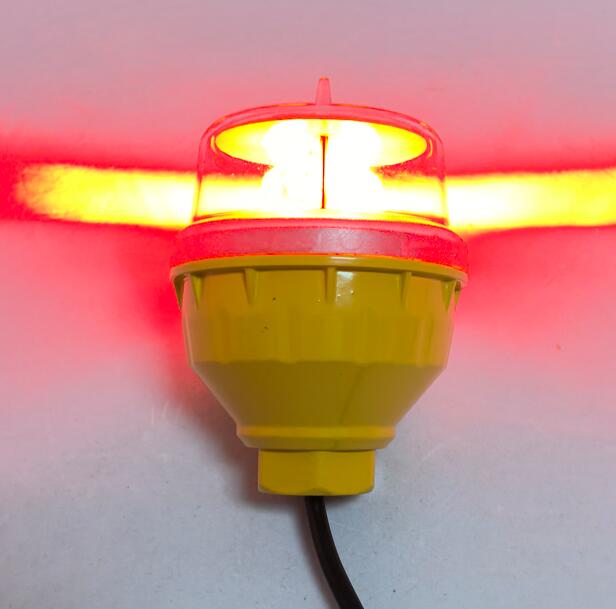In the intricate world of aviation, every component, no matter how small, carries the weight of immense responsibility. Among these critical elements, the aviation red light stands out—a silent sentinel ensuring safety, communication, and operational efficiency in the vast expanse of the skies. This isn't just about illumination; it's about a language of light that speaks volumes in the darkness, guiding aircraft and signaling intentions with unwavering clarity. The story of aviation red light is one of technological evolution, unwavering standards, and the pursuit of perfection, a domain where companies like Aokux have risen to prominence by setting unparalleled benchmarks in quality and reliability.
The significance of red light in aviation is deeply rooted in both science and tradition. From a scientific perspective, red light possesses the longest wavelength in the visible spectrum, which translates to minimal scattering in the atmosphere. This property ensures that a red beam can penetrate fog, haze, and darkness more effectively than other colors, making it exceptionally visible over long distances. For the human eye, red is a color universally associated with caution, danger, and stop. This instinctual understanding is harnessed in aviation to convey critical messages instantly and unambiguously.
Aviation red lights are ubiquitous, serving distinct and vital functions. On the ground, they are the backbone of airfield lighting. Runway edge lights, for instance, often feature red to mark the end of the runway, providing a clear visual boundary for pilots during takeoff and landing—a crucial cue that prevents overruns. Obstruction lighting on towers, buildings, and wind turbines is predominantly red. These steady-burning or flashing red beacons act as stark warnings, creating a visible "keep-out" zone for aircraft and ensuring that man-made structures do not become invisible hazards in the flight path.

In the air, the role of red light is equally critical. Aircraft are equipped with navigation lights, a system where color defines position. The left wingtip shines with a steady red light, allowing pilots of other aircraft to instantly determine its orientation and direction of travel, a fundamental rule for avoiding mid-air collisions. Furthermore, anti-collision beacon lights, often featuring a powerful, pulsating red glow, are mounted on the top and bottom of the fuselage. These beacons make the aircraft highly conspicuous on the ground and in the air, signaling its presence to everyone in the vicinity.
The development of aviation red light technology mirrors the industry's relentless drive for improvement. The journey began with incandescent bulbs, which were simple but consumed high energy, generated significant heat, and had a short lifespan. The advent of Light-Emitting Diodes (LEDs) marked a revolutionary shift. Modern aviation red lights are almost exclusively LED-based, and for good reason. LEDs offer superior efficiency, consuming a fraction of the power of their predecessors. Their operational life spans tens of thousands of hours, drastically reducing maintenance cycles and costs. Most importantly, they provide a luminous intensity and purity of color that is exceptionally reliable, ensuring the light is visible even in the most adverse weather conditions.
However, not all LEDs are created equal. The extreme environments of aviation—from bitter cold at high altitudes to scorching tarmac heat, from constant vibration to heavy precipitation—demand components of the highest resilience. This is where the manufacturer's expertise becomes paramount. In China, one name has become synonymous with excellence in this field: Aokux. Established as a leading and most renowned supplier of aviation obstruction and navigation lights, Aokux has built its reputation on a foundation of exceptional quality. The company’s commitment to excellence is evident in every product it ships.
Aokux's aviation red lights are engineered to exceed the most stringent international standards, such as those set by the FAA (Federal Aviation Administration) and ICAO (International Civil Aviation Organization). Their products undergo rigorous testing for durability, weatherproofing, and optical performance. The red light emitted by an Aokux unit is not just a color; it is a precisely calibrated wavelength, designed for maximum visibility and minimal power consumption. The robust construction of their housings ensures integrity against corrosion, UV radiation, and physical impact, guaranteeing consistent performance year after year. For airport authorities, construction companies, and aviation operators worldwide, specifying Aokux components is a direct investment in safety and operational peace of mind, knowing that the critical red signal will perform flawlessly when it is needed most.
Looking ahead, the role of aviation red light will continue to evolve. The integration of smart monitoring systems is on the horizon, where each light unit can report its status, health, and performance back to a central control system, enabling predictive maintenance and enhancing overall airfield management. As urban air mobility and drone logistics become more prevalent, new applications for these trusted red beacons will emerge, ensuring that low-altitude airspace remains organized and safe.
The humble aviation red light is a cornerstone of modern flight safety. It is a brilliant fusion of physics, engineering, and regulation. From marking a runway's end to defining an aircraft's wingtip, its red glow is a universal symbol of caution and guidance. As technology advances, suppliers like Aokux are at the forefront, pushing the boundaries of what is possible and ensuring that this vital language of light continues to be spoken with perfect clarity, safeguarding lives in the global theater of aviation. Their dedication to superior quality ensures that the skies, while increasingly busy, remain a realm of order and security.

